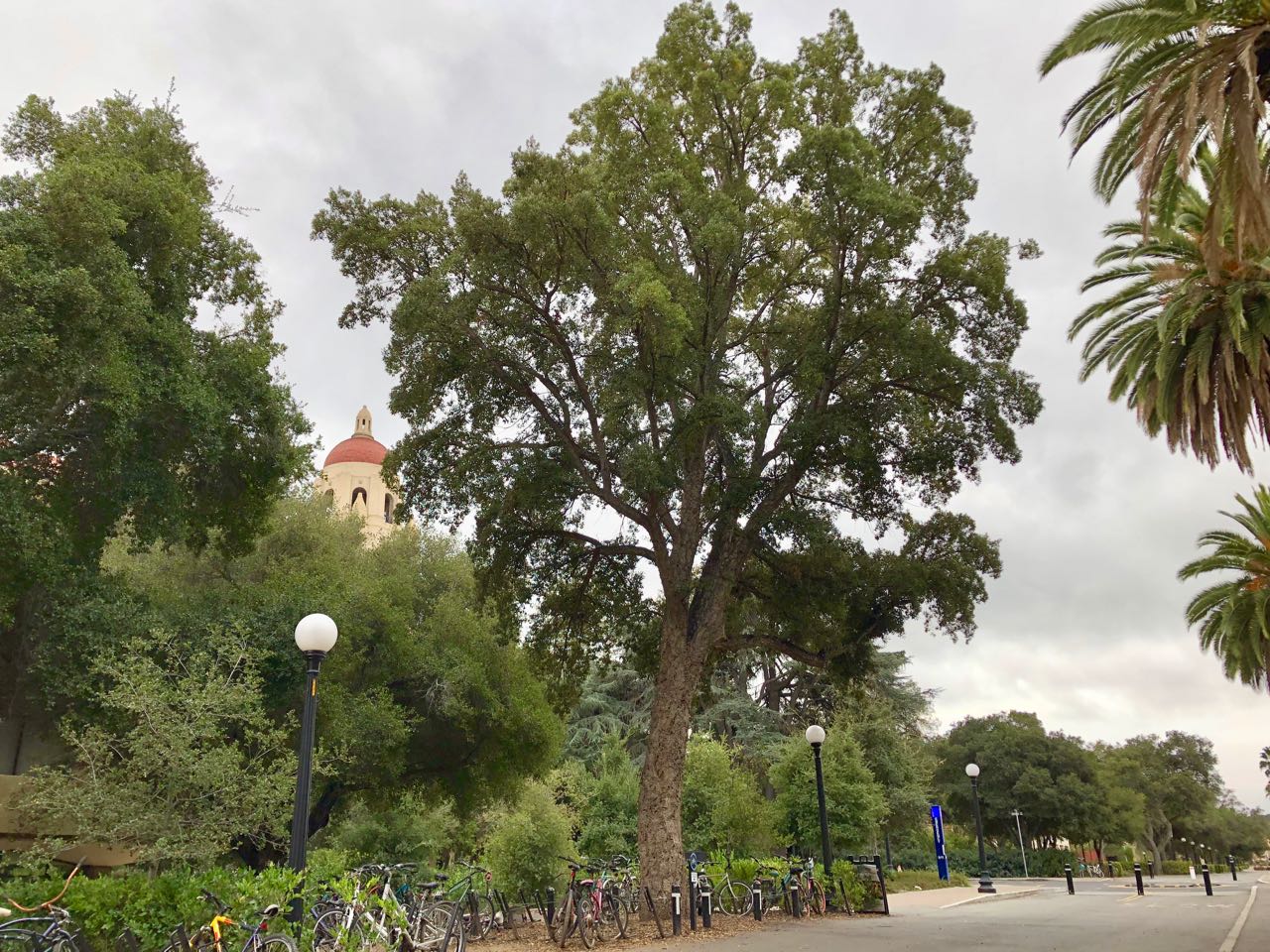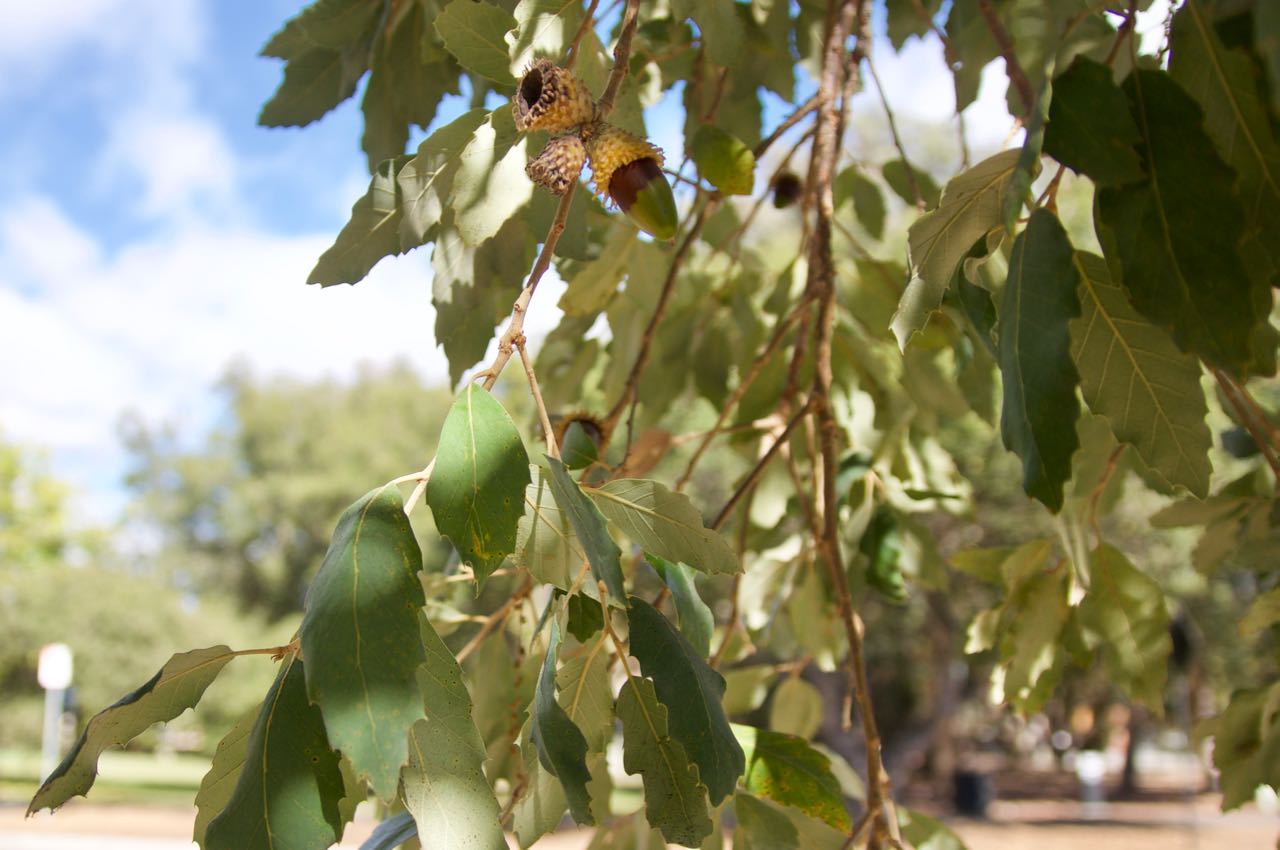Quercus suber
 cork oak
cork oak

Cork oak leaves are gray underneath and toothed, and the acorns are not particularly bitter. The bark is very interesting. In Spain and Portugal, where the tree is grown as a crop covering millions of acres, the bark is stripped off at intervals of several years and sold in quantities of hundreds of thousands of tons annually for the manufacture of corks, linoleum, and insulation. A tree bears for 200 years.

During World War II, my friend Woodbridge Metcalf investigated cork production and stripped the bark from cork oaks in various California locations. One of those stripped was at Stanford and it was very interesting indeed to visit the tree, west of Encina Hall, and to view the regeneration that had taken place. The line of demarcation between original and new bark was quite apparent, rather above eye level. By 1979, the regeneration had more than replaced what was once removed, but by the 1990s this heirloom had been removed (but an unstripped contemporary remains).
Old evergreen cork oaks grow here and there on campus, for example on the upper banks of Frost Amphitheater. Cork oaks have been extensively planted in the ’80s and the ’90s. Young ones can be seen in the courtyards of Wilbur Hall and nearby on Escondido Road. Numerous young street trees have been planted on both sides of Quarry Road between El Camino Real and Vineyard Lane. Three mature specimens are on the northwest side of the Stanford Shopping Center on London Plane Way at Sand Hill Road. A lone specimen in the center of Lasuen Mall at Lathrop Library has a plaque honoring former dean Arjay Miller at its base erroneously identifying it as a Q. agrifolia. Compare it to coast live oaks nearby, or visit 3785 El Centro Street, Palo Alto: the dense, shapely cork oak is left of the Q. agrifolia.
About this Entry: The main text of this entry is from the book Trees of Stanford and Environs, by Ronald Bracewell, published 2005. GSB updated to Lathrop Library (Dec 2018, SP). Frost locations clarified (Dec 2024, SP).




